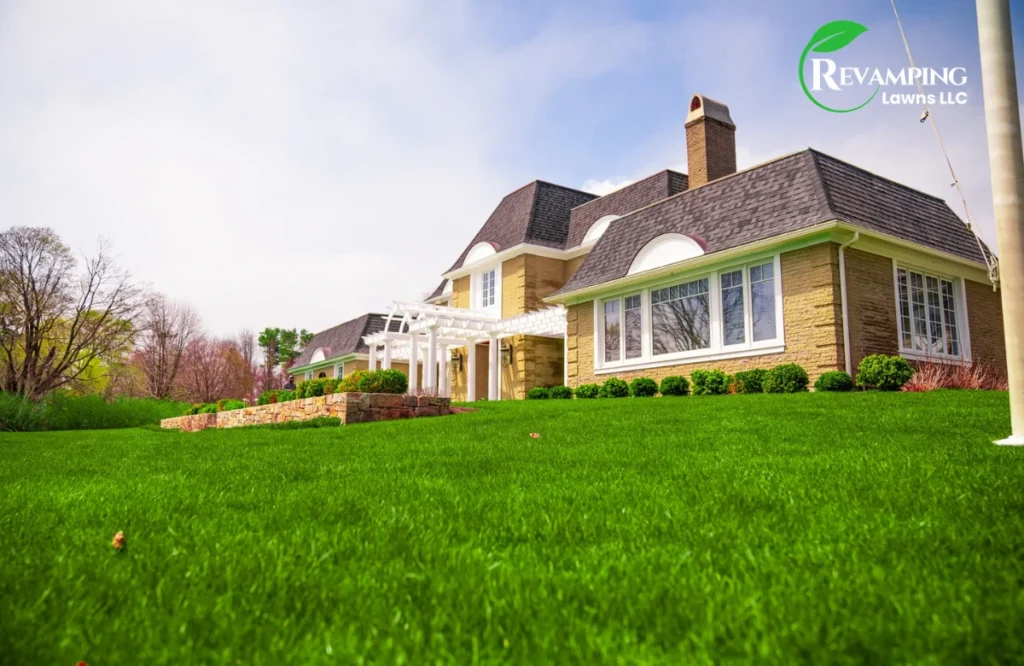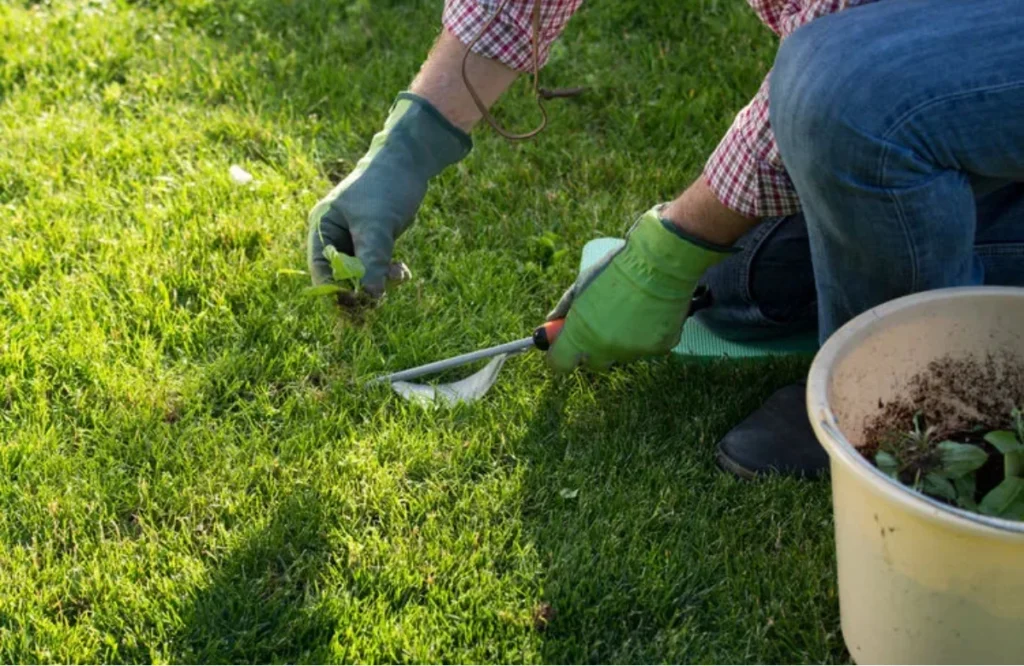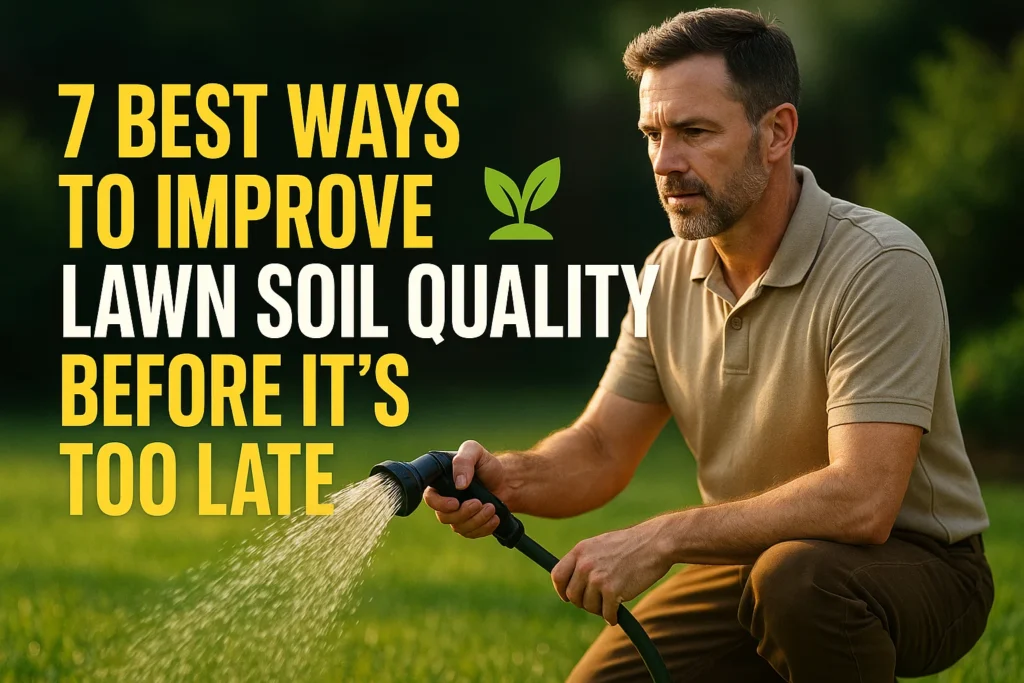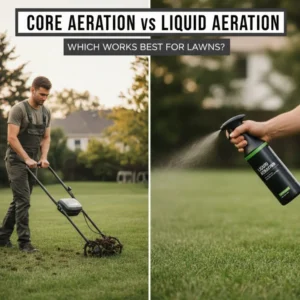The quality of lawn soil is the key to the success of any beautiful yard. The danger signals are all around: stubborn brown spots, water pooling instead of soaking in, and bare spots that refuse to grow no matter how much seed you scatter. But the majority of homeowners find out too late. When you enrich lawn soil properly, you don’t need a complete yard overhaul. But timing matters. After soil is severely compacted or depleted, it becomes exponentially more difficult and costly to recover. In this guide, we are discussing the best techniques that professionals employ to enhance the soil in the lawn and rejuvenate the problem areas.
Why You Need to Improve Lawn Soil
Grass roots are supported by lawn soil. Healthy soil is nutritious, maintains moisture, free to air, and supports healthy microorganisms that help grass to grow. Nevertheless, typical lawn soil problems include compacted clay, acidic or alkaline pH, low organic matter and poor drainage that may impede the growth of a lawn. Enhancement of the lawn soil entails the improvement of the soil structure, nutrient content and biological activity. This leads to increased root penetration, water retention, nutrient availability, and stress resistance.
How to Assess Soil Quality
It is important to know the current state of the lawn soil before making it better:
- Soil Texture: Is it sandy (fast-draining, low-nutrient), clay (heavy, compacted, poor drainage), or loamy (balanced soil)?
- Drainage: Does it stand on the surface or drain fast?
- pH Level: The ideal pH of most grasses is 6.2 to 7.0. Excessively acidic or alkaline soil influences the absorption of nutrients.
- Organic Matter: Soil that has low organic content is usually compact and lifeless.
- Visible Symptoms: Yellowing grass, bare spots, or moss can be a sign of poor soil.
A soil test kit gives the exact pH and nutrient content, an essential procedure prior to amendments.
Proven Methods to Improve Lawn Soil Quality
1. Adding Organic Matter
The foundation of soil improvement is organic matter in the form of compost, well-rotted manure, leaf mold, and grass clippings. It:
- Loose compacted soil, particularly clay.
- Enhances water retention in sandy soils.
- Gives the necessary nutrients.
- Promotes positive microbial and worm activity.
Top dress your lawn with 1/4 to 1/2 inch of compost or organic material regularly. Recycling nutrients and nourishing the soil organisms is also achieved by mulching grass clippings and fallen leaves back into the lawn.
2. Aerating the Soil
Aeration is the process of drilling small holes in the soil to minimize compaction and enhance the movement of oxygen. This enables the roots to go deeper and enhances the penetration of water and nutrients. Plug removal core aerators are very effective. The intention is to aerate in spring or fall when the grass is growing.

3. Adjusting Soil pH
In case your soil test indicates that your pH is not within the optimal range, then corrective action is required:
- To increase pH (decrease acidity): Add lime slowly and water it in. Do not over-liming.
- To decrease pH (decrease alkalinity): Add sulfur or organic matter amendments.
Always use soil testing instructions to use the right amount.
4. Improving Drainage
Inadequate drainage kills roots and results in patchy lawns. To improve drainage:
- Add organic matter to loosen heavy clay.
- Add sand gradually and organic matter; excess sand will form a concrete-like texture.
- Take into account gypsum to enhance the clay soil structure.
Make sure that lawn grading is not toward the foundations.
5. Fertilizing Properly
Apply soil test results to choose fertilizers that correct nutrient deficiencies. Compost teas and organic fertilizers enhance the biology of the soil and healthy roots. Avoid the use of excessive chemical fertilizers may destroy soil life and create imbalances.
6. Encouraging Microorganisms and Earthworms
Earthworms plow soil and fertilize it with nutrient-rich castings. Favor worms by incorporating organic matter, leaving grass clippings on the grass, and avoiding harsh chemicals.
7. Overseeding and Topdressing.
Once the soil is improved, overseed with the right grass grow seed to cover bare areas and make the lawn denser. Topdress with compost and topsoil mixture to shield young seedlings and improve the quality of the soil even more.
Typical Lawn Soil Problems and Solutions
Clay Soil
Clay soil is thick and compact, which causes poor drainage and low circulation of air around the grass roots. Water is more likely to lie on the surface and roots are not able to penetrate deep. This usually leads to thin, patchy and unhealthy grass.
Solution:
- Add manure or compost that has well rotted to loosen soil structure.
- Core aerate to loosen compaction and enhance water infiltration.
- Add sand and organic matter (do not use pure sand only)
Sandy Soil
Sandy soil is too quick to drain and therefore dries up too fast and offers low nutrient retention. Sandy soils have a tendency to experience drought stress and nutrient deficiencies in lawns.
Solution:
- Add organic matter frequently to enhance water retention.
- Add compost topdressings to develop soil life slowly.
- Use slow-release fertilizers that are used in sandy soils.

Compacted Soil
Compaction of soil decreases the pore space that roots require to access oxygen, water and nutrients. It is prevalent in busy lawns and in soils that have a lot of clay, which causes stressed and weak grass that is susceptible to disease.
Solution:
- Core aerate to loosen soil plugs and alleviate compaction.
- Topdress following aeration with compost.
- Restrict foot traffic on wet soil.
Poor Nutrient Content
Lawns usually experience nutrient deficiencies that retard growth, discolor, and lower vigor. Healthy grass depends on such nutrients as nitrogen, phosphorus, and potassium.
Solution:
- Test the soil to determine certain deficiencies and pH problems.
- Use fertilizers according to tests.
- Frequently add compost to facilitate nutrient cycling.
Choosing Between Soil Improvement for New vs. Established Lawns
| Aspect | New Lawns | Established Lawns |
| Soil Preparation | Deep tilling and mixing amendments | Surface application without disturbing the grass |
| Amendment Application | Mixed into soil before seeding/sodding | Topdress with thin compost layers |
| Aeration | Beneficial if the soil is compacted | Core aeration recommended |
| pH Adjustment | Mixed in before planting | Surface application as needed |
| Nutrient Management | Pre-plant fertilization | Fertilize using topdressing based on tests |
| Lawn Disruption | Complete soil disturbance is possible | Minimal disturbance to existing turf |
| Speed of Improvement | Faster due to thorough mixing | Gradual improvement with repeated care |
| Best For | New lawns, renovations, new construction | Maintaining and enhancing existing lawns |
Which is Best To Choose?
In new lawns or major renovations, deep soil preparation with good mixing of amendments provides a good base to establish grass fast and healthy. Topdressing and frequent core aeration of the surface of established lawns provide a less invasive method of slowly improving the health of the soil and the vigor of the lawn. Selecting the appropriate approach depending on the state of the lawn will guarantee the best quality of soil and a healthy, strong lawn in the future.
Conclusion
Enhancing the quality of soil in the lawn is essential in achieving a healthy and green lawn. With knowledge of the soil, introduction of organic materials, soil aeration, pH balance, and healthy soil life, a previously unenthusiastic lawn can turn out to be a healthy green area. The long-term care process will keep the soil fertile and resilient, sustaining a strong grass that is resistant to drought, pests, and wear.
Early soil improvement of lawns avoids the future hassles and the expense of repairing the lawn in the future. It is never too late to improve the soil in the lawn care and benefit from a beautiful yard throughout the year with the help of the right practices and patience.
FAQs
Gradual improvement is best achieved by gradual aeration twice a year, ideally in spring and fall.
Yes, it is possible to enhance soil with organic matter, compost teas, and natural soil amendments without synthetic chemicals.
Absolutely. Soil tests provide information on pH and nutrient deficiency, and thus provide appropriate amendments.
It can recover fast in early spring and fall when grass is actively growing.
Yes, the nutrient content can be enhanced by adding approximately an inch of good topsoil and compost without smothering grass.



